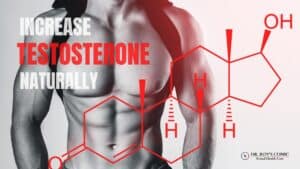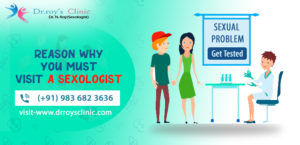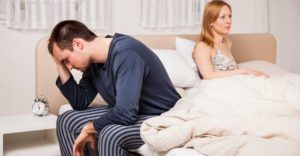A good sex life is the key to a healthy relationship, a person’s overall well-being and happiness. But what is the mantra of the power of sexuality? It is the balance between desire, sensuality, pleasure and satisfaction. Any interference with these components can ruin your sex life and the villain in the story is known as venereal disease. Let’s know more about it.
What is sexual dysfunction?
Sexual dysfunction is a group of problems that interfere with a person’s engaging in sexual activities leading to dissatisfaction as well as personal and relationship problems. Its prevalence is not gender or age specific, rather it can be experienced by men and women of all ages, although the likelihood increases with age. Now, what affects sexual desire and satisfaction is the turbulent interrelationship between body, mind and emotions during the sexual response.
Many times it happens that a person is not in the mood to have sex. Is this normal or a problem?
When to treat a bad night’s experience as a problem?
It is completely normal sometimes to not be in the mood to share intimacy with your partner. It is only a matter of concern when it becomes a daily routine and starts ruining your sex life. Based on the scope of the sexual response affected, sexual dysfunction is mainly classified into four types as described below:
low libido disorder
sexual arousal disorder
aphthous diseases
sexual pain disorder
1. Low Libido Disorder
The first stage of any sexual act is the desire or imagination or idea to do so. Low or no desire to engage in sex that is experienced continuously or repeatedly over a long period of time causing personal discomfort is called low libido disorder. It may develop after a long period of normal sex life or may be always present. It can further be of two types:
Hypoactive sexual desire disorder: This is characterized by a persistent or recurrent absence or reduced desire to be intimate with a partner.
Sexual aversion disorder: This is characterized by a complete avoidance of sex that sours your relationship with your partner. Also, the mere possibility of intercourse can cause one to experience a panic attack.
Reason
In men, low libido can be caused by low levels of testosterone, while in women, it can be due to:
low levels of estrogen
menopause
breast feeding
Hormonal imbalance during childbirth
Other responsible factors common to both (men and women) may include:
Diseases like high blood pressure and diabetes Disease
Certain medicines, such as fluoxetine (antidepressant drugs)
stressful or traumatic past
relationship conflict
sexual barrier
Tiredness
fear of pregnancy
Ages
Depression
Worry
Treatment
The person may be advised to undergo the following:
psychotherapy
hormonal therapy
couple counseling
switch antidepressant medication
2. Sexual arousal disorder
Sexual arousal is something that fuels your erotic engines, in the absence of which intercourse can be difficult, painful and unprofitable. When a person experiences persistent lack or reduced sexual arousal or arousal (psychological, such as tingling or throbbing sensation in the genital or vaginal moisture, or penile erection etc.) in response to sexual stimuli such as kissing Emotional or physical arousal) or dancing, watching porn and touching the genitals etc.) is known as sexual arousal disorder. These include the inability to achieve an erection in men and swollen and lubricated genitals in women.
Reason
Most of the causes are similar to low libido disorder, eg, age, hormonal changes, depression, stress etc. Some other responsible reasons are as follows:
Vaginal thinning and dryness after menopause (atrophic vaginitis)
Vaginal infection (vaginitis) or bladder infection (cystitis)
nerve damage and blockage of blood vessels
Diseases like diabetes, multiple sclerosis, obesity, parkinson’s disease, high blood pressure etc.
Treatment
Some common measures that may be helpful are listed below:
Activities that increase trust and intimacy between sexual partners
Mutual cooperation in making the environment more conducive for intercourse
discussing or knowing your partner’s sexual interests
Use of aphrodisiacs such as sildenafil or tadalafil (the drugs should only be taken in consultation with your doctor)
Treatment to restore hormonal imbalance
3. Aphrodisiacs
This type of sexual dysfunction occurs when a man either fails to achieve or delays sexual climax (orgasm), even when there is sufficient sexual arousal and there is sexual arousal’, for example, in men. delay in ejaculation; Or achieves orgasm too early, eg premature ejaculation. This can result in interpersonal distress, frustration, irritation and personal problems.
Causes
The main causes of orgasmic dysfunction are listed below:
Psychological, shyness, low self-esteem, religious and cultural beliefs, guilt, depression, stress
Personal issues, relationship conflicts, history of sexual abuse, physical trauma, gynecological surgeries
Diseases; diabetes, high blood pressure
Medications, fluoxetine (antidepressants)
Nerve damage, spinal cord injury
Treatment
Its treatment mainly depends on the cause. One may be required to:
Treat underlying diseases or damages
Change antidepressant medications
Undergo sex therapy or cognitive behaviour therapy
Increase genital stimulation using sex toys or arousal oils or through other sexual activities during sexual intercourse or masturbation
Couple counselling
Hormonal therapy
4. Sexual Pain Disorder
Also, referred to as genito-pelvic pain or penetration disorder and is characterized by the pain associated with various phases of sex, such as arousal, penetration, and ejaculation. This type of conditions makes it difficult to enjoy sex rather make it more traumatic, increases interpersonal and sexual distress, reduces emotional quality of life.
Causes
The pain during sexual activities can arise due to the following cause:
Poor lubrication and tense vaginal muscles
Vaginismus or Involuntary vaginal muscle spasms
Neurological, urinary tract, or bowel disorders and infections, such as chronic prostatitis, chronic pelvic pain syndrome, genital herpes
Hormonal changes due to menopause
Psychological factors: fear, depression, anxiety
Nerve damage, spinal cord injury
Damage to the penis, peyronie’s disease
Medication side effects
Treatment
The strategy of treatment for sexual pain disorders is mainly cause oriented. The individual may be required to undergo:
Treatment for underlying diseases or damages
Changing the medications responsible for causing painful sexual experience
Undergo sex therapy or cognitive behaviour therapy
Hormonal therapy
Couple counselling
Vaginal relaxation exercises
Use of lubricants, different sexual postures
Don’t judge a book by its cover. If you are worried that your partner is trying to avoid sex talk or giving excuses when you approach for sex, then talk more compassionately to your partner instead of coming directly to a conclusion. May be your partner needs your help and support and is afraid of being judged for a problem more private and serious.






















